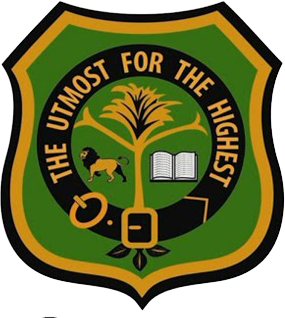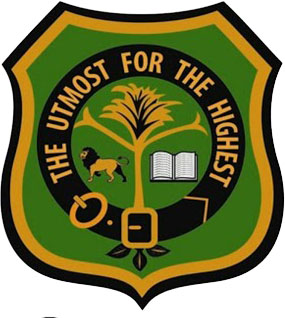History
The name Calabar is from the port city of Calabar, Nigeria, situated at the mouth of the Niger River, where British Baptists had gone to set up a base of operations. Calabar Theological College was founded in 1843 to train freed Africans in Jamaica for Christian missionary work in West Africa.
The High School was established later on premises at Chetolah Park, located on Slipe Pen Road in Kingston. Initially the mission was to educate the sons of Baptist ministers, however, recruitment of students was quickly expanded to include the sons of the working class and the rising middle class, as there were not enough sons of Baptist ministers to make the school viable. Also, there were not enough secondary schools at the time to fill the needs of the growing population.
Calabar High School came into existence under the sponsorship of the Baptist Missionary Society of London and The Jamaica Baptist Union. The school opened its doors on September, 12th 1912, with 26 students.
The founder of the school, the Reverend Ernest Price, who was also President of Calabar Theological College, became the first Headmaster. The co-founder, the, Reverend David Davis, became the Second Master and tutor.
Within a year, enrollment had reached 80 boys, and the school received Government recognition. An early benefactor was Miss Elizabeth Purcell who, in 1919, left the adjoining property, Studley Park, in trust for the school.
Studley Park was the compound of the Calabar High School Complex, which housed the prefects, other senior boys, some senior members of staff and most importantly, the Headmaster. Studley Park was situated at the corner of Studley Park Road and Livingston Street and also contained the main pavilion and premier playing field for all forms of sport.
By 1923, the student body included students from many countries. Besides Jamaicans, there were students from England, U.S.A., Australia, New Zealand, Haiti, Panama, Cuba, Cayman, Turks and Caicos Island, Costa Rica, Columbia, Belize, and Nigeria.
In 1952, Calabar High School and Calabar Theological College moved to 61 Red Hills Road. In 1966, the Theological College moved to Mona to become part of the United Theological College of the West Indies. The high school took over the space formerly occupied by the Theological College. Classrooms are now located in this area.
Boarding was provided until 1970 and allowed students from other parts of Jamaica as welll as other countries to attend the institution. The dormitories were then converted to workshops.
THE SCHOOL SYMBOLS
THE MOTTO - The Utmost for the Highest - was one of the first Jamaican school mottos to be expressed in English instead of Latin. It means that each boy must make maximum effort to achieve goals which he can conceive. "The Highest" also suggests that we aim at doing whatever we do to the Glory of God.
OUR COLOURS - GREEN AND BLACK - represent growth, and difficulties to be overcome, respectively
THE SCHOOL CREST - is a shield bordered by black and yellow enclosing a green field. Into the centre of this area is a girdle bearing the words of the motto in yellow letters and enclosing a tree of knowledge, the two lower branches of which divide the centre circle into three parts.
In the upper third are the spreading branches of the tree while in the left and right lower thirds are, respectively, a lion signifying strength, and an open Bible signifying truth and Godliness.
School Song
Like an ancient river flowing
From the mountain to the sea
So we follow, coming, going
To the wider life to be.
On our course from the source
To the wider life to be.
CHORUS:
Here Sir!, Here Sir!, Here Sir!, Here Sir!
So we answer near or far
Here Sir!, Here Sir!, Here Sir!, Here Sir!
At the call of Calabar
One by one and as they name us
Forth we go from boyhood's rule
Sworn to be renowned and famous
For the honour of the school
True as steel, in our zeal
For the honour of the school.
So today and oh, if ever
Duty's voice is ringing clear
Bidding men to brave endeavor
We will answer we are here
Come what will, good or ill
We will answer we are here.

